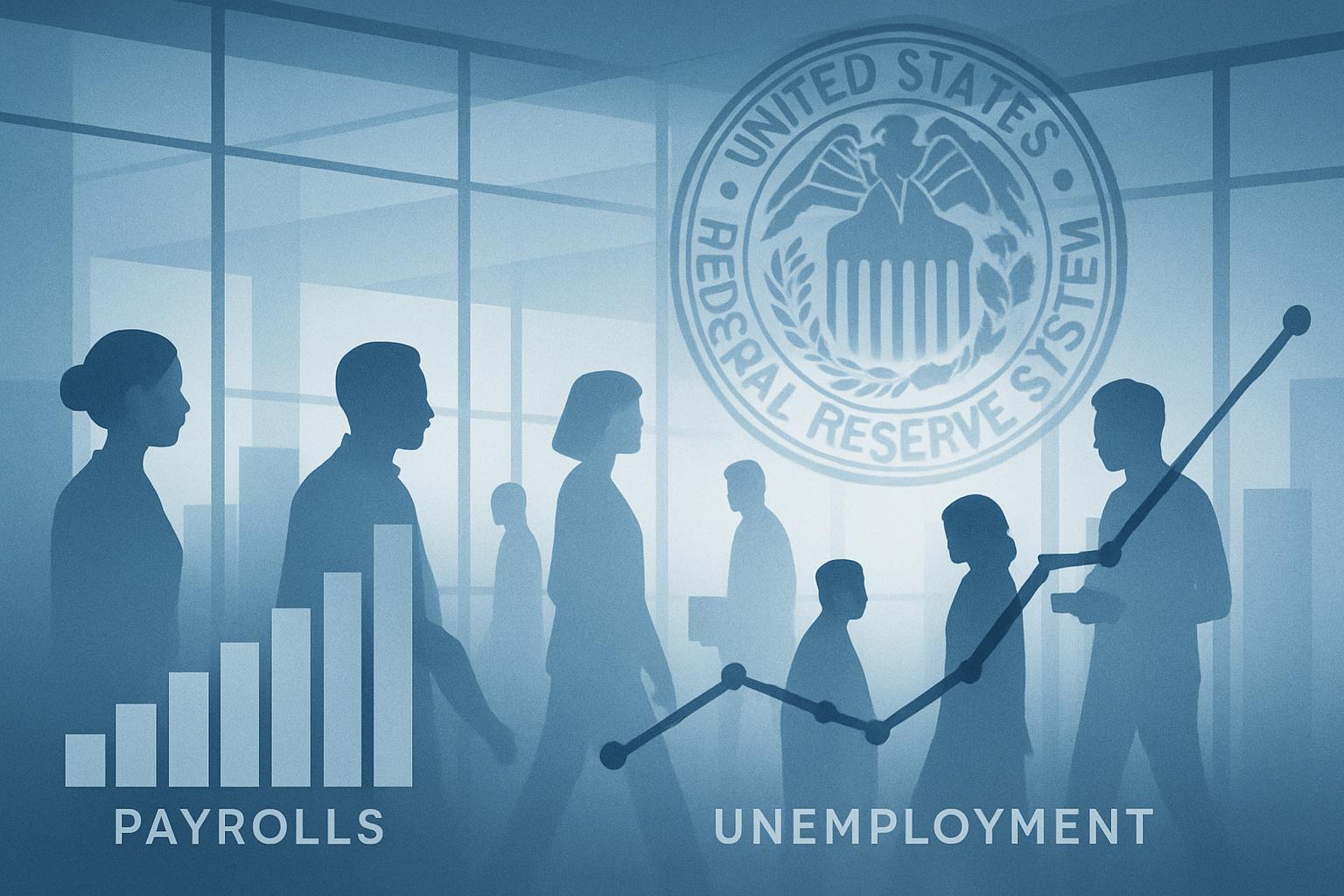August Jobs Report Highlights Continued Labor Market Slowing
The U.S. labor market displayed notable signs of deceleration in August, with nonfarm payrolls increasing by just 22,000, according to the Bureau of Labor Statistics (BLS) report released on Friday. This figure fell well below economists’ consensus estimate of 75,000, underscoring a broader trend of softening job growth.
The unemployment rate rose to 4.3% from previous levels, reflecting a modest increase in the labor force participation rate to 62.3%. Despite the sluggish payroll gains, the household survey component showed a 288,000 increase in employed persons, though the number of unemployed also rose by 148,000.
Wage Growth and Sector Performance
Average hourly earnings advanced 0.3% month-over-month, aligning with expectations, while the 12-month wage growth rate came in at 3.7%, marginally below the projected 3.8%. Sector-wise, health care led job additions with 31,000 new positions, followed by social assistance which added 16,000 jobs. In contrast, wholesale trade and manufacturing sectors each experienced declines of 12,000 jobs.
Federal government employment decreased by 15,000, acting as a drag on overall payroll growth for the month.
Market and Policy Implications
Financial markets reacted modestly to the report, with stock indices opening higher and Treasury yields declining sharply. Futures markets have now priced in a 100% probability of a 25 basis point rate cut by the Federal Reserve at its September 17 meeting, with a smaller chance of a half-point reduction.
The report arrives amid ongoing debate over Federal Reserve policy, as officials weigh slower hiring trends against persistent inflation pressures. The recent firing of BLS Commissioner Erika McEntarfer by President Donald Trump, following the July jobs report, has fueled controversy regarding the impartiality of labor data. McEntarfer’s successor has yet to be confirmed, with William Wiatrowski currently serving as acting commissioner.
Revisions and Data Quality Concerns
July’s payroll increase was revised upward by 6,000 to 79,000, while June’s figures were adjusted downward by 13,000. The BLS is scheduled to release its initial estimate of annual benchmark revisions next Tuesday, covering data from March 2024 to March 2025. These revisions have attracted scrutiny due to lower survey response rates in the post-pandemic period and accusations of political bias.
Outlook
Analysts view the August jobs report as reinforcing the case for a Federal Reserve rate cut. Olu Sonola, head of U.S. economic research at Fitch Ratings, noted, “A weaker-than-expected jobs report all but seals a 25-basis-point rate cut later this month,” highlighting ongoing manufacturing job losses and tariff-related uncertainties as contributing factors.
Overall, the data indicate a labor market losing momentum, complicating the Fed’s efforts to balance inflation control with sustained economic growth.













